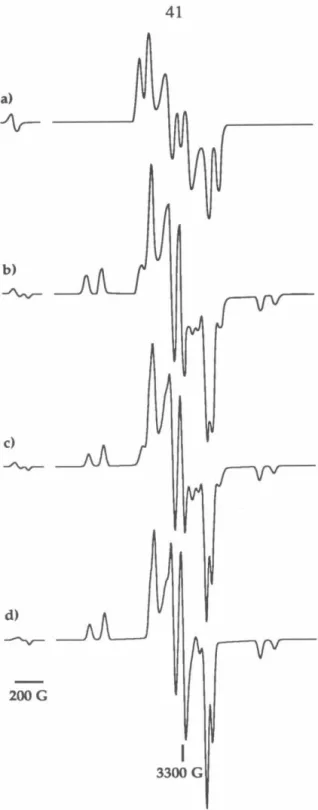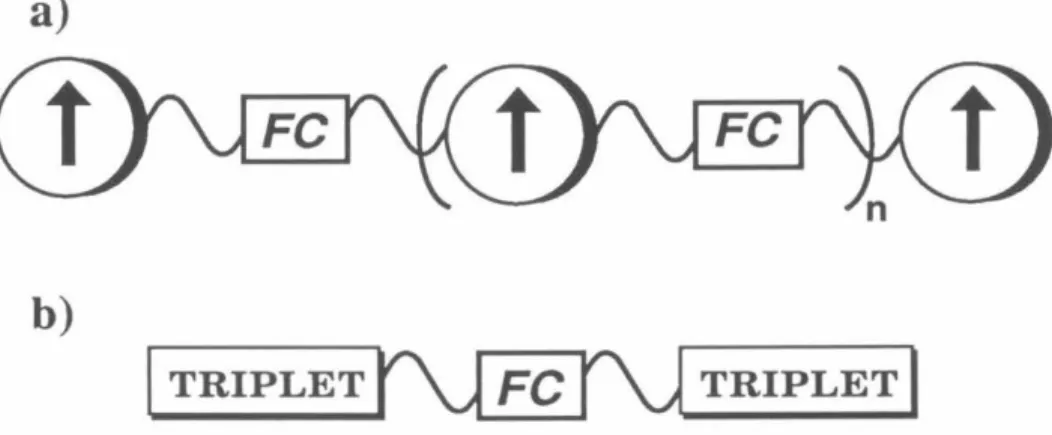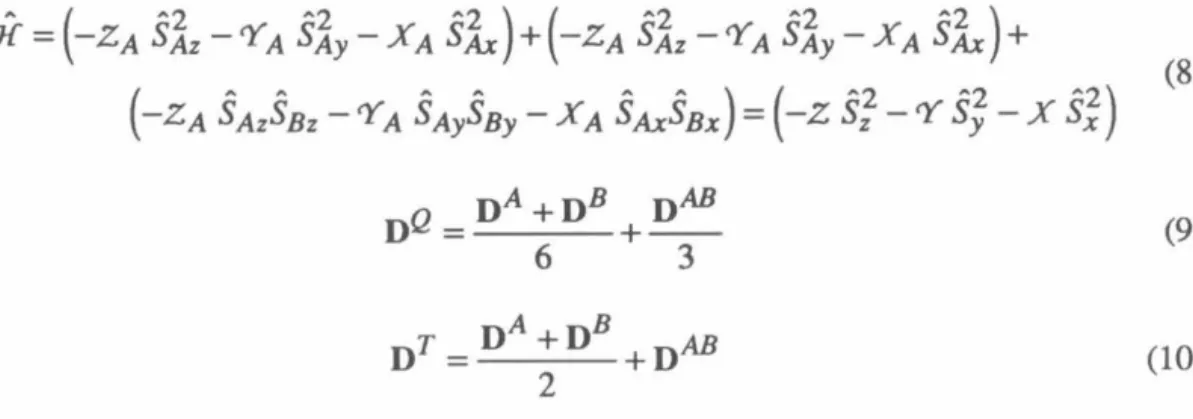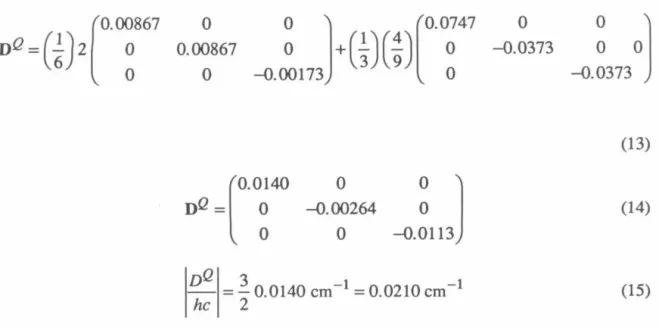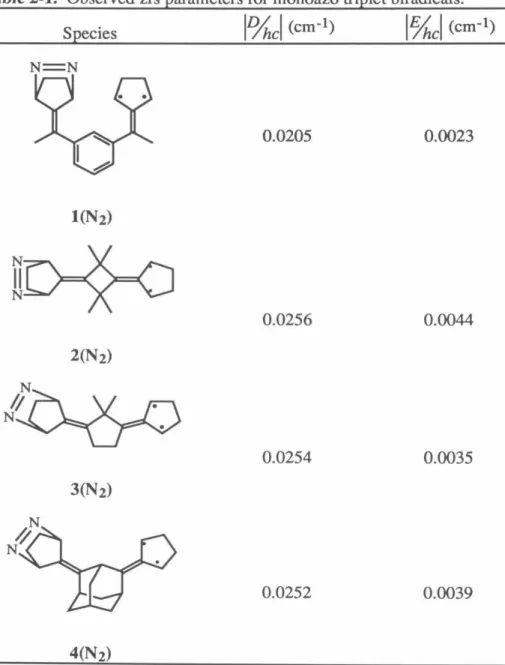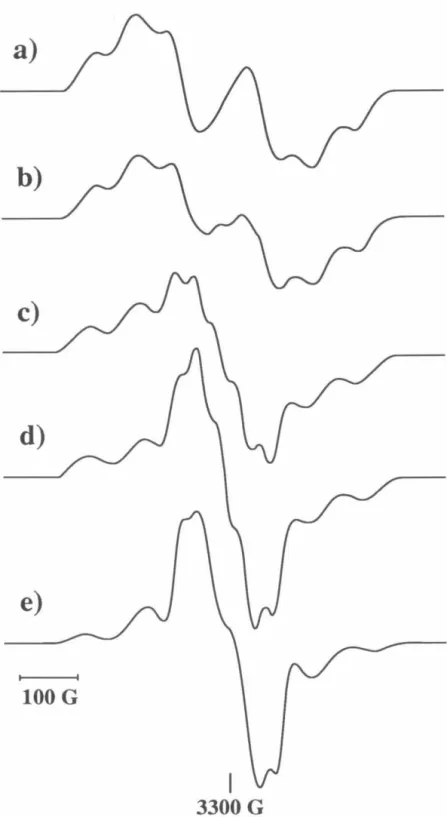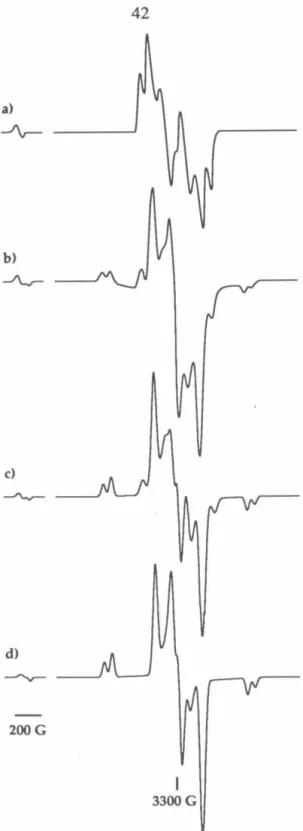Randy Lee, Dave Nichols, Rakesh Jain and Joe Ho are to thank for their contributions to the polymer project. The weak binding of 1,3-cyclopentane has enabled a study of the variable temperature behavior of a 1,3-cyclopentane-based tetraradical FC in its triplet state. By fitting the observed data with the usual Boltzman statistics, we were able to determine the splitting of the ground quintet and excited triplet states.
The focus of the present work is on the magnetic interactions of radical centers in molecules with two, four or more unpaired electrons - biradicals, tetraradicals and polyradicals - whose synthesis represents the first step towards the preparation of rationally designed organic magnetic materials. These phenomena make it impossible to observe EPR spectra of species with high spin in almost all cases.15. The EPR studies described here were aimed at elucidating the fundamental magnetic behavior of various polyradicals, and the matrix isolation conditions were ideal for the purpose.
However, the reactivity of the radical centers is an important point in the design of practical organic magnetic materials. 16–24 In Chapter 5, we describe the synthesis of the polymer poly(diphenylmethylenecyclobutene) PDPMC-H by ring-opening metathesis polymerization (ROMP) 25 and magnetization studies on it.
PDPMC•
Instead, Stem and Gerlach observed that the atoms emerge from the field in only two orientations, corresponding to only two discrete values of the magnetic moment. The results of the Stem-Gerlach experiment prove the quantization of the magnetic states of atoms with non-zero angular momentum. The energy E of this dipole in an external magnetic field H is given by E = -iie • H. The spin quantization of the electron means that the spin is up or down with respect to the external field, ie. the dot product S • H = ±Yz =tuns is dichotomous and.
The total magnetic moment of a sample is the sum of the individual orbital and spin magnetic moments of its constituent electrons. As mentioned above, electron spin is a consequence of relativity and is naturally considered only within the scope of Dirac's relativistic formalism. According to Pauli's Principle, the symmetric or antisymmetric nature of the spin wavefunction must satisfy the symmetry of the spatial wavefunction.43•44.
Spin-orbit coupling provides only a small perturbation of the wave function for almost all light atoms and is negligible for the hydrocarbons that are the focus of this work. In this model, all information regarding the influence of the spatial part of the wave function on the relative energies of the spin states formed by interaction between li) and jj) is contained in the exchange parameter lij.
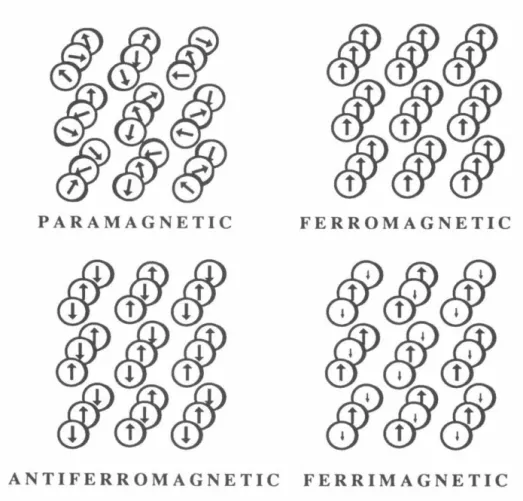
As a result of our research, we have provided direct experimental evidence for the first time on the magnitude of the high spin preference of a localized biradical. While cyclobutanediyls are not nearly as robust as TMMs, this particular molecule provides a further test of the ferromagnetic coupling ability of m-phenylene. The strength of the interaction correlates well with the computationally determined singlet-triplet gap in cyclopentanediyl 23a.
Unfortunately, the preparation of the other bisfulvenes needed for this study could not be done so simply. Due to the success of the above method, we also investigated the synthesis of other dithiones linked to 1,3-cyclopentane and 1,3-cyclohexane ferromagnetic coupling units (FC). We also used THP protecting groups in 37b and 38b but found cleavage of the THP ethers to be difficult in the presence of fulvenes.
In contrast, we found that the mild reagent triethylamine trihydrofluoride in CH3CN118 accomplished clean deprotection of the silyl derivatives to the intermediate alcohols. The instability of the intermediates in the synthesis of 43 caused us to continue a search for simpler syntheses of this compound.
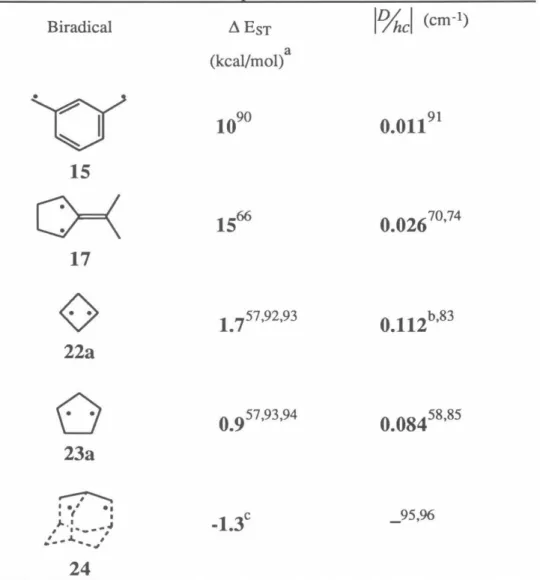
SCHEME2-2
50 The exchange parameter J, due to FC, determines the ground state of the resulting tetraradical. Applying the Heisenberg Hamiltonian to the spin functions of eqs 1–3 leads to an energy expression given in eq. 5 and depicted in Figure 1. A brief review of quintet and triplet state EPR spectroscopy will aid in the interpretation of the experimental spectra.15 ,I29 For a quintet (triplet) there are five (three) energy levels with ms=O ,±l,±2 (m5=0,±1).
A formally forbidden "half-field" fur15=2 transition is also observed in the spectra of quintet and triplet states due to the perturbation of the selection rules of the zfs tensor;. A detailed description of the manner and methods used for these simulations is given in Chapter 4. Therefore, the interaction tensor DAB is determined by scaling the tensor of the corresponding biradical with.
By calculating the energies of the tetraradical eigenfunctions using these Hamiltonians, we can arrive at Eq. 9 and 10 the relationships between the D-tensors of the tetraradical states and the individual interactions that contribute to them.
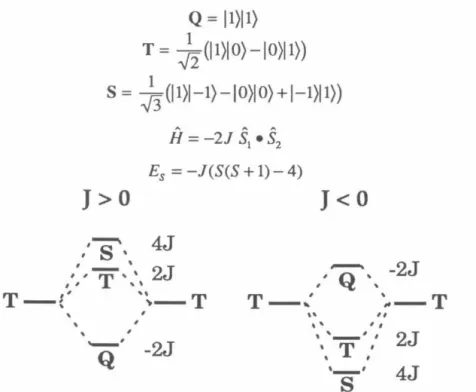
The mixture was stirred for 15 minutes and in 10 minutes a solution of the alcohol obtained in the last step (2.9 g, 13.5 mmol) in methylene chloride was added. The residue was chromatographed on silica gel (15% ethyl acetate/petroleum ether) to give 435 mg (56%) of the desired alcohol. The residue was chromatographed on silica gel using 10% ether/petroleum to give 2.7 g (45%) of the product as a yellow oil.
Based on the analysis of the hyperfine splitting and the species present in the matrix, we are confident that the cyclobutanediyl-based species causes this transition. Simulation of experimental spectra using these programs provides correct spectral assignments. In the usual arrangement of the spectrometer, H 1 is perpendicular to H, which means that the orientation of both fields with respect to the molecular magnetic axes (X, Y, Z) can be described by one set of Euler angles ( 8, t/ J, z).
In terms of these Euler angles, the formula for the derivative of the absorption spectrum is Each set of values (0, i/J) represents a different orientation of the molecule with respect to the external field H. These two programs share the same structure; they differ only in the version of the spin Hamiltonian matrix used.
The field and temperature dependence of the magnetization are collected in the Brillouin function, given by. This moment is reached when all individual moments are aligned with the applied field. All the samples we measure have moments on the order of 1Q-4 and above, simply because of the arrangement of the sample holders (see below).
A single scan of a sample is performed by a unidirectional movement of the sample in the direction of the magnetic field. Due to the second derivative nature of the pickup coils, it is possible to design a sample holder that is invisible to the instrument except in the sample region. The results of the t-butyl peroxide EPR experiment, in which we have directly observed a spin-.
0.72 (4:1 pentane:diethyl ether) was recrystallized from a mixture of diethyl ether and methanol to give 0.64 g of clear crystals of the alcohol. THE OUTPUT CONSISTS OF THE TRANSITION LABEL (I*J), THE RESONANT FIELD IN KILOGAUSS, THE TRANSITION MOMENT (DIMENSIONLESS), THE FIELD SWEEP FACTOR (DIMENSIONLESS), THETA AND Pil.
